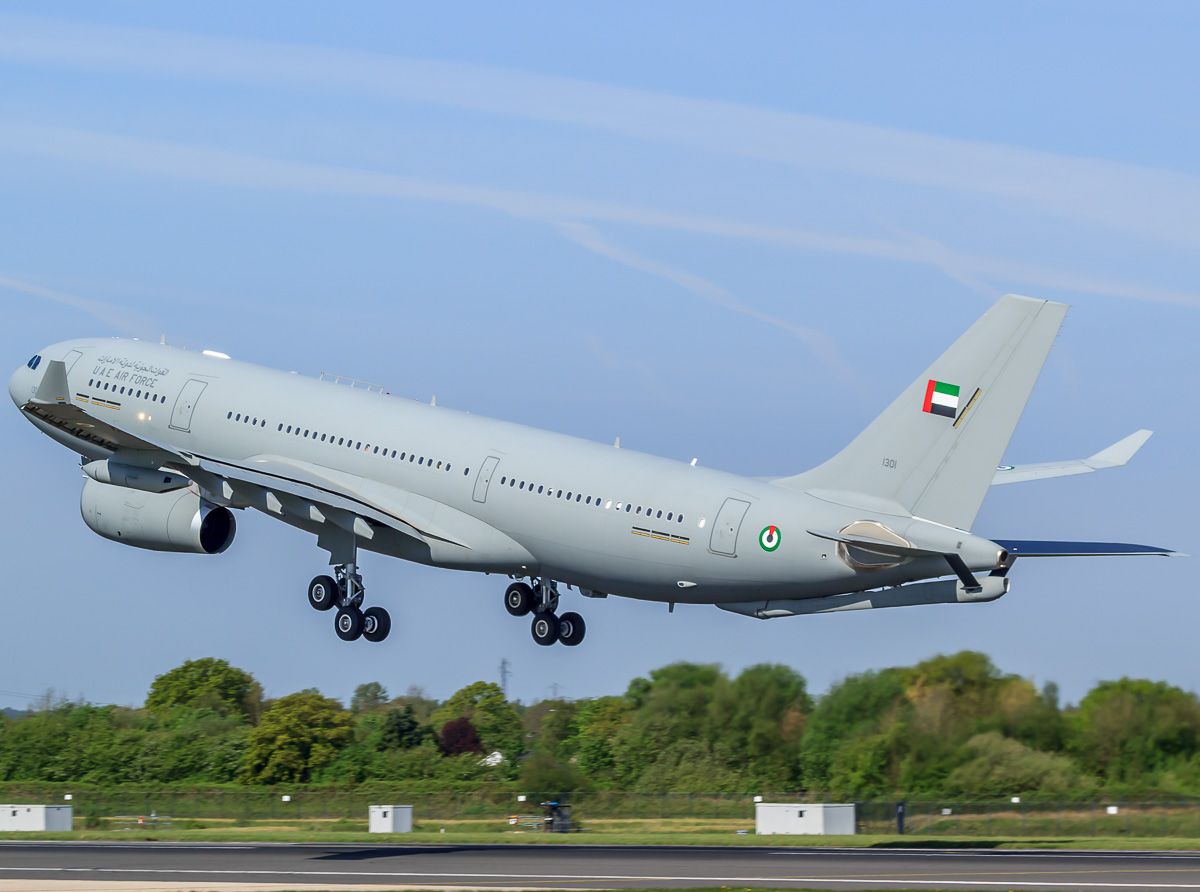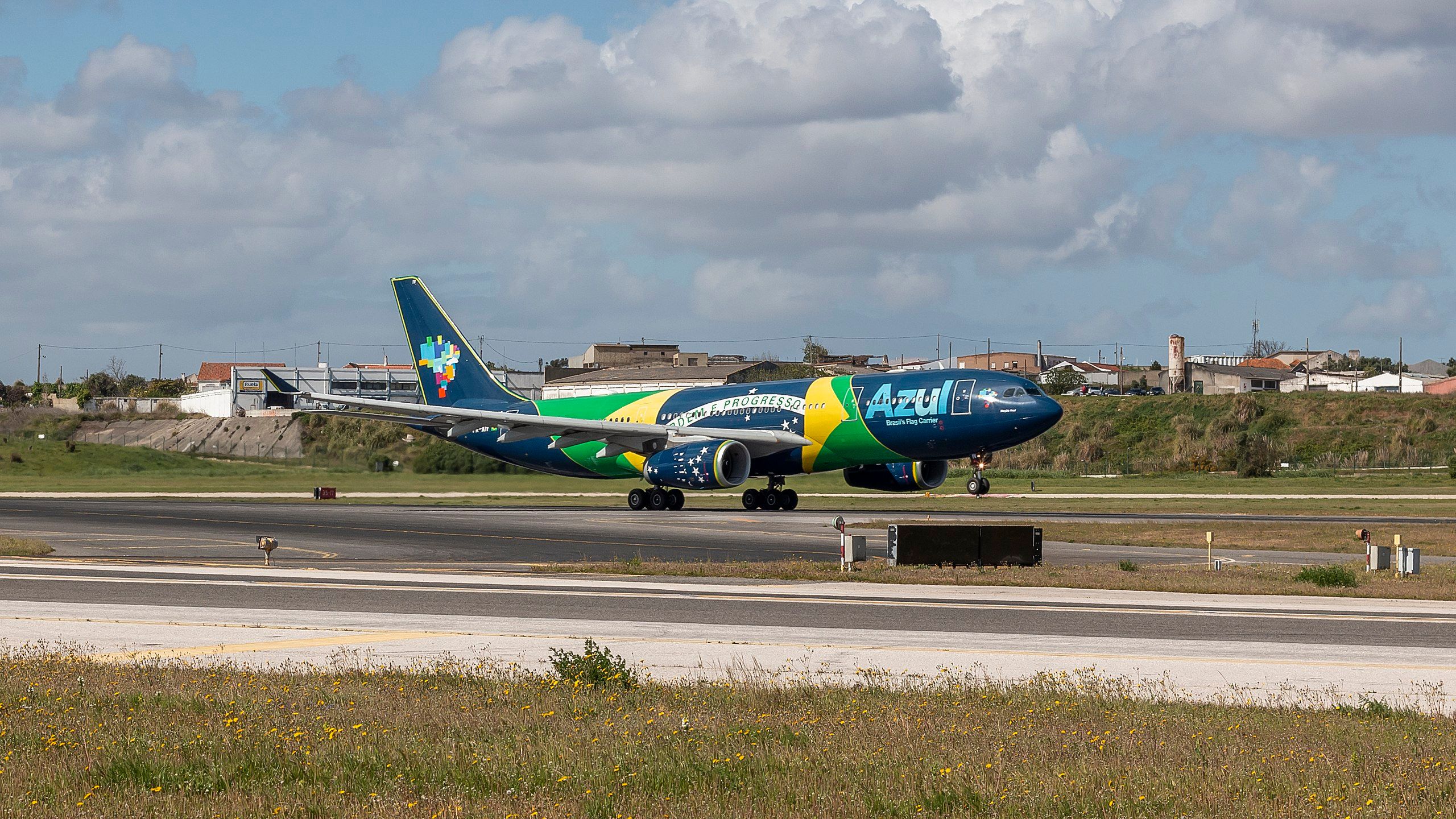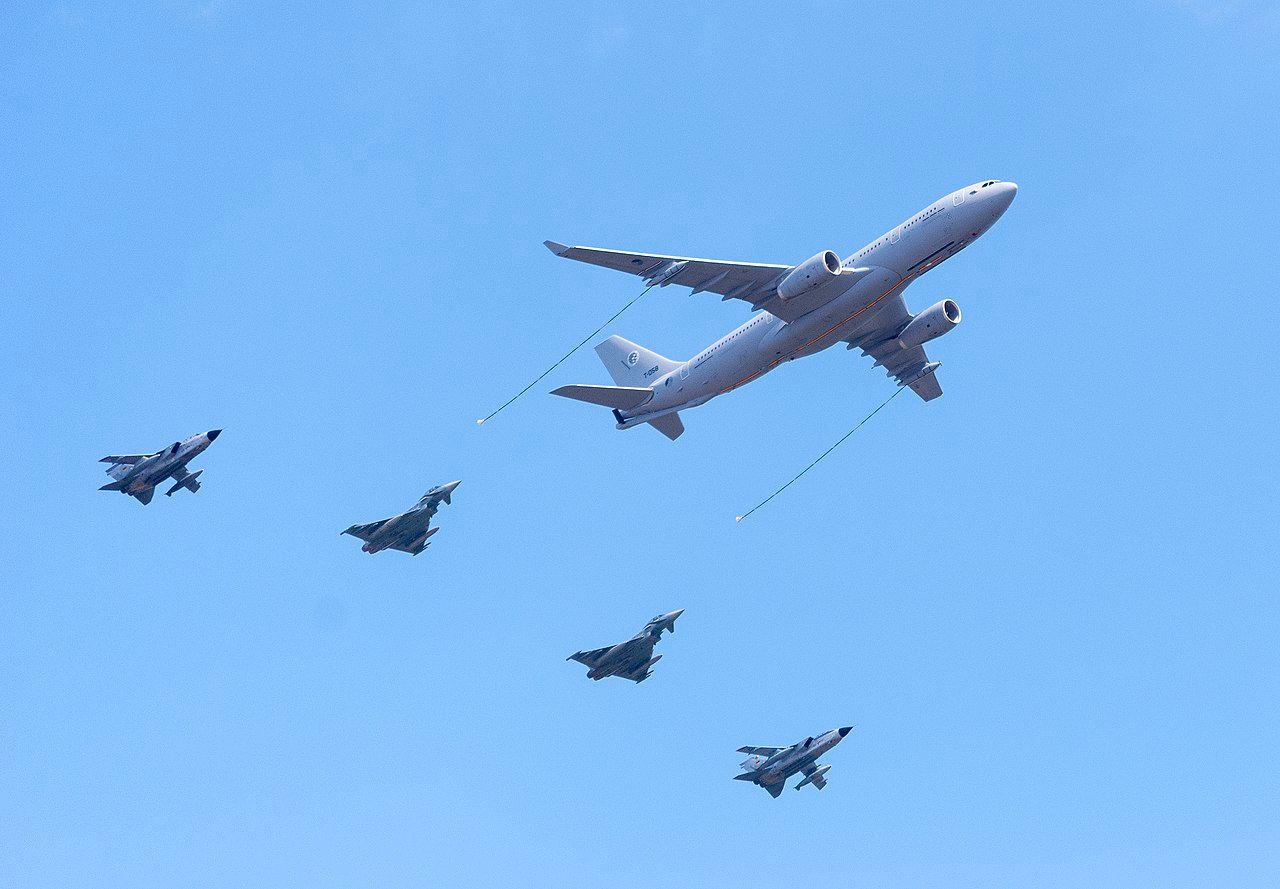Summary
- The Airbus A330 MRTT is a military aircraft based on a commercial A330-200 platform and has been in service since 2011 with multiple customers worldwide.
- The aircraft goes through a specialized conversion process at Airbus' military aircraft facility in Getafe, Spain, where it is equipped with hardware and systems for air-to-air refueling and airlift capabilities.
- The A330 MRTT's versatility allows it to be configured for various missions, such as troop transport, medical evacuations, and VIP government transportation. It can also carry up to 111 tonnes of fuel for aerial refueling.
Like the Boeing Poseidon P-8 and KC-46 Pegasus, the Airbus A330 MRTT is a military aircraft based on a commercial aircraft platform. But, unlike these Boeing models, the A330 MRTT's name clearly shows which aircraft family it is based on. This widebody multi-role tanker transport (MRTT) has been in service since 2011 and now officially operates with the militaries of eight countries, as well as NATO's "multinational MRTT fleet." This article will be a deep dive into this militarized Airbus widebody, examining its history, technical specifications, capabilities, and its customers around the world.
A330 MRTT history
It was back in 2011 that Airbus' military division delivered the very first A330 MRTT to the Royal Australian Air Force (RAAF). The delivery resulted from an extensive development and test program to produce the world's first certified and flying new-generation tanker/transport aircraft.
Years of hard work preceded the aircraft's entry into service. As noted by FlightGlobal, the program kicked off in 2004 with a contract to convert the RAAF's five A330s into MRTTs. More specifically, the contract was signed on December 20th, 2004, between the government of Australia and Airbus Defence predecessor EADS-CASA. EADS stands for European Aeronautic Defence and Space Company, while Casa stands for Construcciones Aeronáuticas SA. The companies would eventually be regrouped to form Airbus Defence.
Aviation Week notes that the first A330 MRTT, intended for Australia, rolled out of the EADS-CASA facilities in Getafe, Spain, in June 2007. The remaining four aircraft that were part of the initial order were then modified to become MRTTs in Brisbane, Australia, with work conducted by Qantas Defense Services.
The Australians expected to take delivery of the first aircraft in 2008. However, this was pushed back to 2011 due to delays resulting from Australian airworthiness requirements.
Get all the latest aviation news right here on Simple Flying.
Two 'origins': Purpose-built or converted
With all of this history, it's important to note that each and every Airbus A330 MRTT starts off as a regular Airbus A330-200 before undergoing a specialized conversion process.
As noted by Airbus, the aircraft are produced on the company's commercial airplane final assembly line in Toulouse, France. Once their initial build-up is complete, they are flown to Airbus' military aircraft facility in Getafe. At this Spanish facility, A330s are equipped with hardware and systems for their dual roles as air-to-air refueling platforms and airlifters for troops and cargo.
This process means that military customers are even able to secure old passenger airframes from civilian operators to convert into MRTT aircraft. For example, the Spanish Ministry of Defence acquired three Iberia Airbus A330s for conversion to MRTTs. On the other side of the Atlantic, the Brazilian Air Force acquired two ex-Azul Airlines jets for conversion, while the Royal Canadian Air Force has opted to convert two ex-Kuwait Airways A330s.
Specifications and abilities
Knowing that the A330-200 is the foundation of every A330 MRTT, it's safe to assume that many of its dimensions will be identical to its commercial cousin. This would obviously include the airframe's overall length of 58.82 meters (193 feet) and its wingspan of 60.30 meters (197 feet 10 inches.) However, as noted in the "multi-role tanker transport" name, the MRTT's list of capabilities is undoubtedly much more diverse than a passenger A330-200.
Airbus states that the aircraft can carry a maximum payload of up to 45 tonnes (99,000 lbs). Depending on the seating configuration, this could see up to 300 passengers. However, in a MedEvac cabin layout, this could be different. Airbus offers the example of 40 stretchers, 20 seats for medical staff, and seating for 100 passengers; This would be combined with up to 37 tonnes of cargo in the lower deck.
For an aircraft configured to be full MedEvac, the manufacturer states that the jet can accommodate up to 130 NATO stretchers.
The aircraft's versatility ultimately means that its configurations will differ wildly between customers and even between different missions. While one MRTT might be mainly focused on transporting troops for deployments, another might be configured for medical evacuations. Others might be set up to be VIP government transports - such as the UK's RAF Voyager "Vespina."
As the Royal Air Force notes, Vespina provides transport for Government Ministers and the Royal Family. Alongside its VIP Role, the aircraft remains certified for its quote-unquote "original use." This includes Air-to-Air Refuelling and personnel transport.
The A330 MRTT's air-to-air refueling capability makes it a crucial part of air force operations that deploy fighters and other military aircraft. Airbus states that one A330 MRTT can support the deployment of four fighter aircraft plus 50 personnel and 12 tonnes of freight (such as luggage, spare parts, and equipment). In this configuration, it would have a range of 5,200 km (3,231 miles),
Aerial refueling versatility
As a tanker, the A330 MRTT can carry up to 111 tonnes of fuel, which Airbus says is the highest capacity of all tanker aircraft, even when compared to those with additional fuel tanks in the cargo deck.
Operating with different militaries and their respective fighter aircraft, the A330 MRTT can be fitted with different aerial refueling systems. These include:
- Fuselage Refuelling Unit (FRU)
- Under-wing pods
- Or An Aerial Refuelling Boom System (ARBS)
Aircraft such as the A400M or C295 can be refuelled with the A330 MRTT's FRU, while under-wing pods can be used to refuel any NATO or allied probe-equipped receivers such as the Eurofighter, the Tornado, the Jaguar, or the F/A18 Hornet. Finally, the ARBS can be used to refuel aircraft such as the F-16 Fighting Falcon, F-35A Lightning II, or even another A330 MRTT fitted with the proper receptacle.
Orders and deliveries
Well, Airbus data accurate as of the end of May 31st, 2023, states that 68 A330 MRTTs have been ordered, with 57 now delivered and in operation.
Going by official Airbus data, here are the countries and the number of aircraft ordered at the time of this article's publication:
- Australia: 7
- France: 13
- Saudi Arabia: 6
- Singapore: 6
- South Korea: 4
- Spain: 3
- United Kingdom: 14
- United Arab Emirates: 5
- NATO - MMF: 10
There are two notes for this list. Firstly, the Western military alliance known as NATO (North Atlantic Treaty Organization) has its own fleet of MRTTs as part of its MMF. MMF stands for "multinational MRTT fleet."
As such, while these aircraft may be operated by personnel from specific NATO countries, the aircraft are not attached to a particular country. As noted by the alliance, six NATO Allies pooled their resources to make this initiative possible: Belgium, the Czech Republic, Germany, Luxembourg, the Netherlands, and Norway.
The other thing to highlight is that Canada and Brazil have also acquired aircraft to be converted into A330 MRTTs. However, these jets are mysteriously absent from Airbus Defence's orders and delivery data.
While one explanation could have been that conversions of former passenger aircraft aren't counted, this reasoning fails when we consider the fact that Spain's three ex-Iberia A330s are included in this list. Indeed, Australia's A330 MRTT fleet also includes ex-Qantas A330-200s.
We contacted Airbus Defence about the posted numbers, but the company insists that its data is accurate.
The United States is not a customer
While the A330 MRTT has been chosen by many NATO members and allies of the United States, it shouldn't be surprising that the US military would opt for a homegrown solution instead of this European offering.
This comes in the form of the Boeing KC-46 Pegasus, which, like the A330 MRTT, is a multi-role widebody aircraft capable of transportation and aerial refueling. And, like the A330 MRTT, the aircraft is based on a commercial transport platform, which in this case, is the 767-200.
While the Boeing jet may have fewer customers, the US Air Force's sheer size and operational demands mean that order numbers are well ahead of the A330 MRTT. Three countries (the US, Japan, and Israel) have orders for more than 130 KC-46 Pegasus airframes.
So what do you think of the Airbus A330 MRTT? Have you ever seen one for yourself? Share your experiences by leaving a comment!
Sources: Aviation Week, FlightGlobal, Airbus, Airbus delivery data, Royal Air Force









